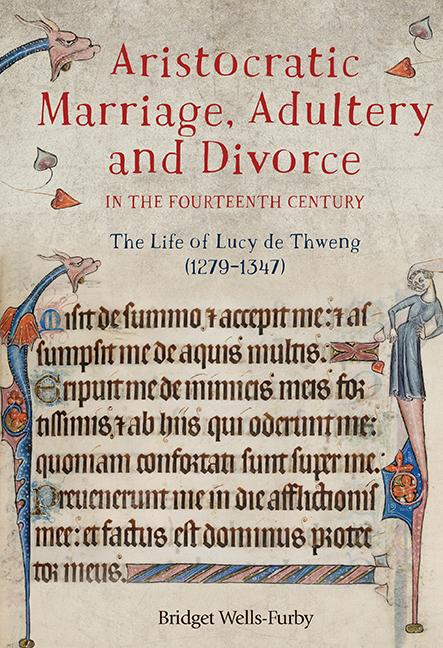 Aristocratic Marriage, Adultery and Divorce in the Fourteenth Century
Aristocratic Marriage, Adultery and Divorce in the Fourteenth Century Book contents
- Frontmatter
- Contents
- List of Illustrations
- Acknowledgements
- List of Abbreviations
- Note on the Text
- Introduction
- Map
- 1 Birth and Family; Inheritance and Disinheritance
- 2 Wardship and First Marriage
- 3 Separation and Divorce
- 4 Adultery and Fornication
- 5 Second Marriage
- 6 Widowhood
- 7 Third Marriage
- 8 Death
- Summary and Conclusions
- Bibliography
- Index
7 - Third Marriage
Published online by Cambridge University Press: 04 April 2019
- Frontmatter
- Contents
- List of Illustrations
- Acknowledgements
- List of Abbreviations
- Note on the Text
- Introduction
- Map
- 1 Birth and Family; Inheritance and Disinheritance
- 2 Wardship and First Marriage
- 3 Separation and Divorce
- 4 Adultery and Fornication
- 5 Second Marriage
- 6 Widowhood
- 7 Third Marriage
- 8 Death
- Summary and Conclusions
- Bibliography
- Index
Summary
After the charter to Guisborough, the next time Lucy occurs in the records is in November 1327, by which time she was married to her third husband, Sir Bartholomew de Fanacourt. He was not an eminent Yorkshire landholder, like Latimer and Meinill, nor did he belong to a similar family, like Everingham, although he had obtained an interest in Yorkshire property and he was of chivalric birth.
Bartholomew was born overseas and his brother, Robert, had close connections in France and was a French subject by 1352, but they were probably the sons of Sir Walter de Fanacourt who had made a position for himself in England. In 1277, Walter served on campaign in Wales on behalf of John de Camoys, and in 1277–78 acquired from Camoys the manors of Ash (Kent) and Wotton (Surr.), and probably Westcote (Surr.). By July 1282 he was knighted and had joined the service of Roger Bigod, earl of Norfolk. He was appointed by Bigod to act as his deputy marshal in the royal household and was serving there in the latter part of the 1280s. He was in Gascony with the king between April 1286 and July 1289, and he witnessed royal charters in May 1286 and July 1290, but he had been replaced as king's marshal by 1293. Probably in June 1293 he sold Ash, Wotton and Westcote to William Latimer the elder, and in August he was preparing to go overseas. He appointed attornies to act for him for two years and, probably between 1296 and 1298, the king's friend Robert de Tybetot requested letters of protection for him while he was in the king's service. This is the last that is heard of him and he was dead by January 1304 when his widow, Maud, was pursuing claims of dower in the three manors. The evidence that Bartholomew and Robert were sons of Walter is chiefly armorial. Walter's arms appear on a roll of arms c.1296 as sable, a cross patonce argent.
- Type
- Chapter
- Information
- Aristocratic Marriage, Adultery and Divorce in the Fourteenth CenturyThe Life of Lucy de Thweng (1279–1347), pp. 166 - 186Publisher: Boydell & BrewerPrint publication year: 2019
